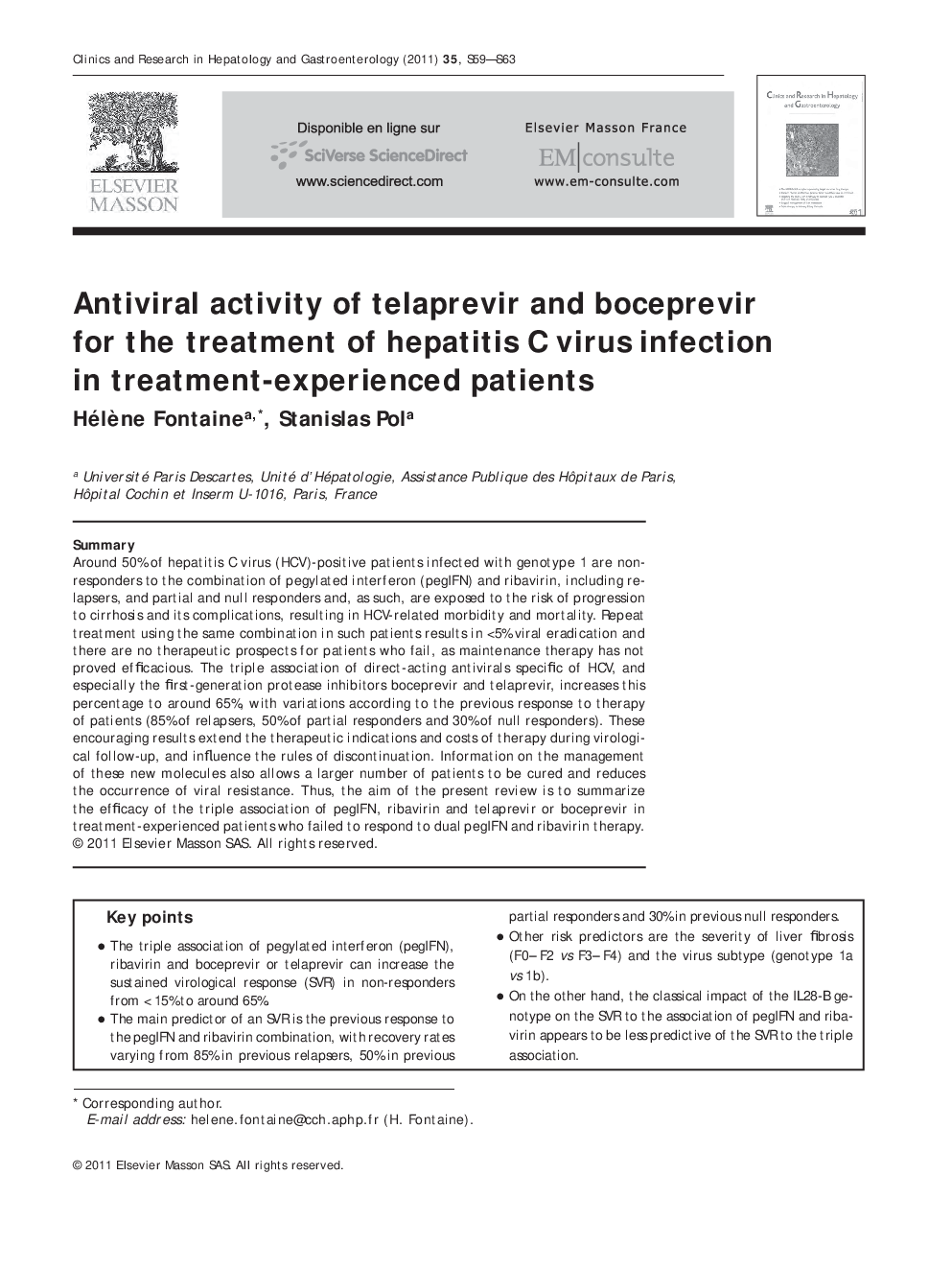| Article ID | Journal | Published Year | Pages | File Type |
|---|---|---|---|---|
| 3286970 | Clinics and Research in Hepatology and Gastroenterology | 2011 | 5 Pages |
SummaryAround 50% of hepatitis C virus (HCV)-positive patients infected with genotype 1 are nonresponders to the combination of pegylated interferon (pegIFN) and ribavirin, including relapsers, and partial and null responders and, as such, are exposed to the risk of progression to cirrhosis and its complications, resulting in HCV-related morbidity and mortality. Repeat treatment using the same combination in such patients results in <5% viral eradication and there are no therapeutic prospects for patients who fail, as maintenance therapy has not proved efficacious. The triple association of direct-acting antivirals specific of HCV, and especially the first-generation protease inhibitors boceprevir and telaprevir, increases this percentage to around 65%, with variations according to the previous response to therapy of patients (85% of relapsers, 50% of partial responders and 30% of null responders). These encouraging results extend the therapeutic indications and costs of therapy during virological follow-up, and influence the rules of discontinuation. Information on the management of these new molecules also allows a larger number of patients to be cured and reduces the occurrence of viral resistance. Thus, the aim of the present review is to summarize the efficacy of the triple association of pegIFN, ribavirin and telaprevir or boceprevir in treatment-experienced patients who failed to respond to dual pegIFN and ribavirin therapy.Key points•The triple association of pegylated interferon (pegIFN), ribavirin and boceprevir or telaprevir can increase the sustained virological response (SVR) in non-responders from < 15% to around 65%.•The main predictor of an SVR is the previous response to the pegIFN and ribavirin combination, with recovery rates varying from 85% in previous relapsers, 50% in previous partial responders and 30% in previous null responders.•Other risk predictors are the severity of liver fibrosis (F0– F2 vs F3– F4) and the virus subtype (genotype 1a vs 1b).•On the other hand, the classical impact of the IL28-B genotype on the SVR to the association of pegIFN and ribavirin appears to be less predictive of the SVR to the triple association.
